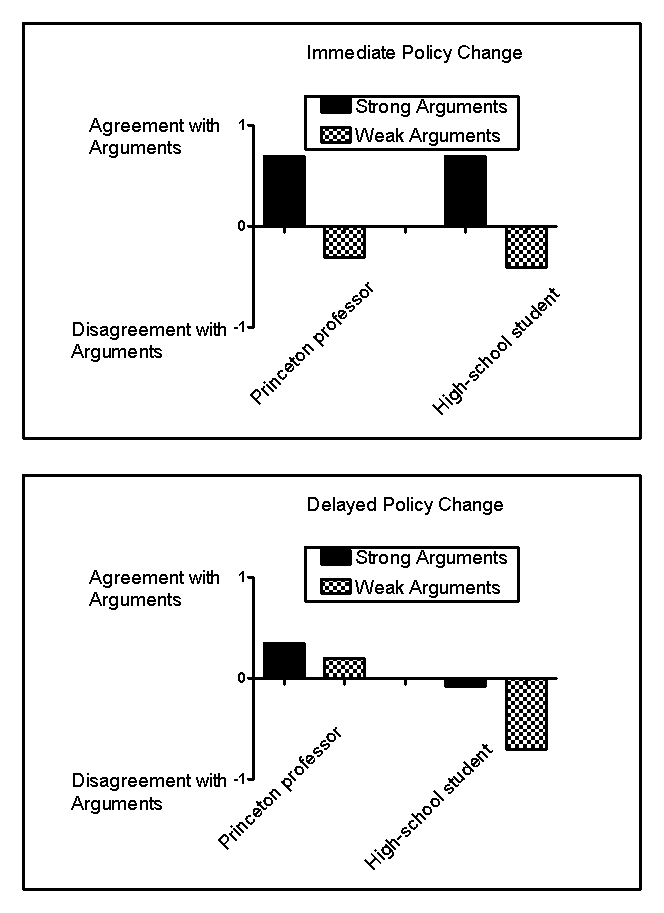Use the following to answer questions
Scenario II
The following scenario contains fabricated results consistent with the following study:
Petty,R.E. ,Cacioppo,J.T. ,& Goldman,R.(1981) .Personal involvement as a determinant of argument-based persuasion.Journal of Personality and Social Psychology,41,847-855.
Every day,consumers are exposed to scientifically based sales,marketing,and public relations strategies designed to influence purchasing decisions,change opinions,or win votes.One common sales strategy is the foot-in-the-door technique,a method that involves first making a smaller request that consumers are likely to grant and then following it with a larger request.Another common strategy is the door-in-the-face technique,which involves making an unreasonably large request that consumers will reject and then following it with a smaller request.When persuasion is necessary,it usually takes one of two forms: heuristic persuasion,which involves an appeal to habits or emotion,and systematic persuasion,which involves an appeal to facts and reason.Often,people will rely more on heuristics-simple shortcuts or "rules of thumb"-to make decisions instead of systematically weighing the evidence.
Petty and colleagues (1981) investigated some of these techniques in college students listening to arguments in favor of their college requiring an institution-level comprehensive final examination for graduation.Some students were led to believe that,if adopted,this policy would take place right away,and some were led to believe that the change would take place in a decade.In addition,some of the students were led to believe that they were listening to an argument from a Princeton professor,and others were led to believe that they were listening to an argument from a high-school student.Finally,some students heard strong arguments in favor of the policy,and some heard weak arguments.Thus,the experiment arranged six groups of students.For example,one group of students heard strong arguments from a high-school student about a far-removed policy change.Figure 13.1 shows fabricated results illustrating the major findings of this experiment.
Figure 13.1 
-(Scenario II) Which factor is NOT an independent variable in the Petty and colleagues (1981) experiment?
Definitions:
Performance Review
A formal assessment in which an employee's job performance is evaluated, typically on an annual basis, to discuss achievements and areas for improvement.
General-to-specific
An organizational approach that starts with broad, general statements and gradually narrows down to more specific details or examples.
Sales Proposal
A document designed to pitch products or services to potential clients, detailing benefits, pricing, and implementation strategies.
Cause-and-effect
A relationship between events or things, where one is the result of the other or others, demonstrating how different actions or events are linked.
Q42: Many experts believe meditation exerts its psychological
Q108: _ are MORE likely than others to
Q115: The Big Five dimensions of personality are
Q137: According to Shelley Taylor,the female response to
Q155: Professor Anderson believes that Mary's failing grade
Q168: University students who keep their dorm rooms
Q240: A condition of reduced muscle tension,cortical activity,heart
Q269: Much of what people know about the
Q322: Neediness is a characteristic of fixation in
Q352: We tend to underestimate the variability among